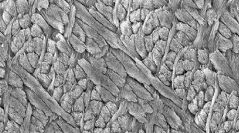

 Geodiversitas
26 (3) - Pages 493-507
Geodiversitas
26 (3) - Pages 493-507The paleontological surveys in the lignites of the Tertiary basin of Nong Ya Plong in Central Thailand have led to the discovery of a new fossiliferous locality. This locality, located in the Cha Prong pit, has yielded relatively well preserved fossils (two mandibles and isolated teeth) of a diatomyid rodent, Fallomus ladakhensis Nanda & Sahni, 1998, which was first described only from two isolated lower molars from the Oligo-Miocene Kargil Formation in Ladakh (India). This additional material allows better characterization of the Diatomyidae and discussion about the possibility of phylogenetic relationships with the Pedetidae. The occurrence in Nong Ya Plong of F. ladakhensis in association with a typically late Oligocene rhinocerotid (of western European affinities) testifies to the existence of Oligocene deposits in Thailand – a period still scantily documented in South Asia. The Paleogene/Neogene transition is particularly significant in South Asia in terms of climatic changes, which are related to the important paleogeographic and paleogeomorphological events consequent to the India-Eurasia collision. The fauna from Nong Ya Plong, coupled with those of the Oligocene of Pakistan and India, provides a glimpse into the evolutionary history of mammal communities in South Asia and into the paleoenvironmental conditions (inferred) during this critical time interval.
Mammalia, Rodentia, Diatomyidae, Fallomus, late Oligocene, Thailand, Pakistan, biochronology, paleoenvironment, paleobiogeography